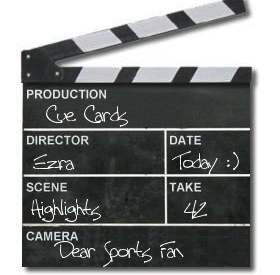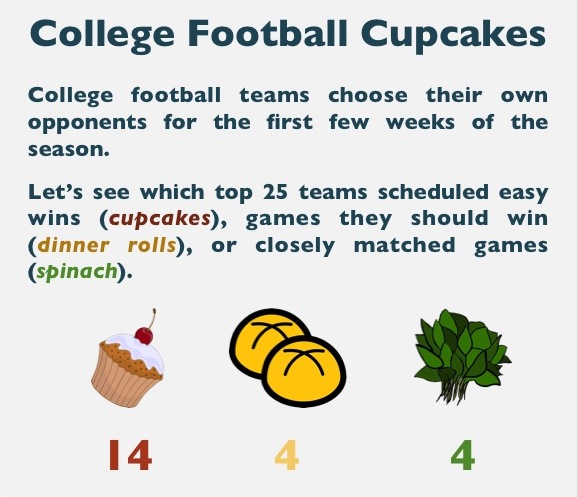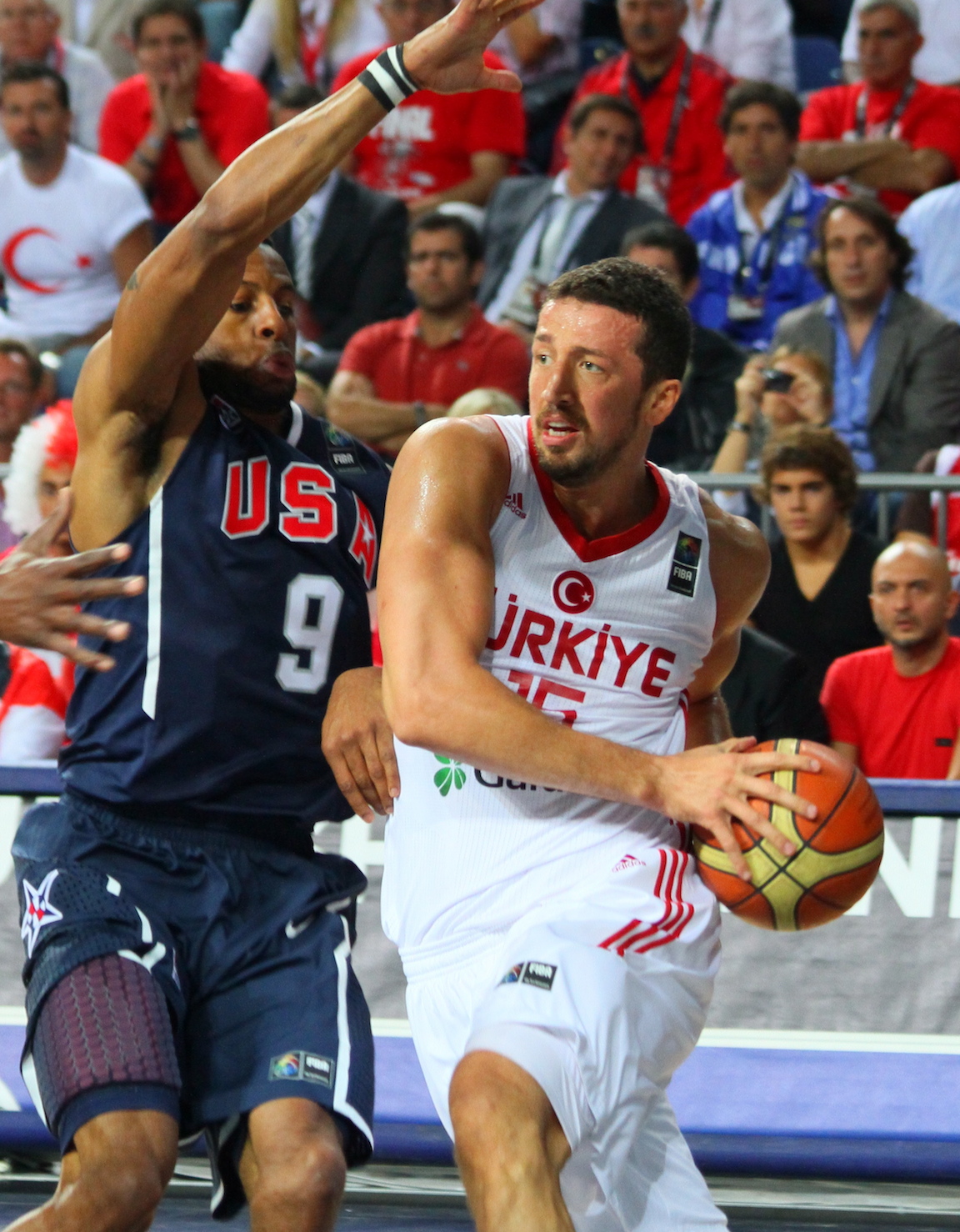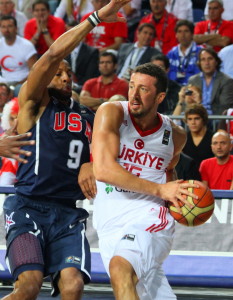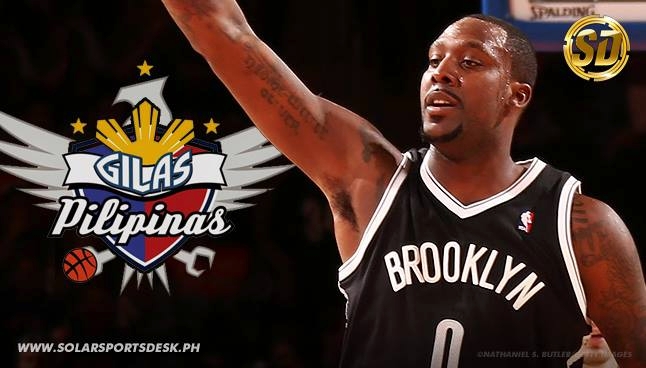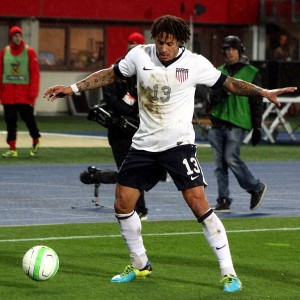I’m hours away from my most important fantasy football draft of the year. I’m full of anticipatory energy. I’m not alone in this feeling this way about fantasy football drafts. The other day I talked to a self-professed fantasy sports obsessive and he described his experience of draft night as “shaky – nervous and excited.” For people who don’t play fantasy sports, and here’s some common ground that many sports fans and non-sports fans can find with each other, the experience of draft night is a strange one. Let’s see if I can explain it.
For a very, very quick reminder, here’s how fantasy football works and what a draft is. Fantasy football is a game that people play with a small group of people, usually friends or colleagues. Just like most other games, the outcome of fantasy football is based partially on choices made by its players and partially on semi-random events that occur in the game’s universe. In a role-playing game like Dungeons & Dragons, these random events may be generated by rolling dice. In video and computer games, there are semi-random events programmed into the game itself – Sim City might generate a challenging natural disaster, a shooting game may present its player with more or fewer enemies to defeat. In fantasy football, the outside force that modifies how the game goes is the real performance of players within the National Football League (NFL). In fantasy football, each player or owner of a fantasy football team has a selection of real NFL players on their team and depending on how the real players perform in real games, their imaginary team will win or lose.
Draft night is the primary time when fantasy football owners construct their teams. There are two ways that this happens. The most common is a “snake draft” where teams take turns choosing players. Not unlike a playground game, when all the teams have chosen a player, the order is reversed for choosing the second player, and so the draft goes, snaking back and forth. The other model is an auction where players go up for auction and every team has a chance to bid on them with a (fake) budget. While there is some wiggle room during the fantasy football season to trade players with other teams or to drop players from your team and pick up players who are not on any team, the draft is the most meaningful tactical moment of the whole game.
Beyond simply winning or losing in the imaginary world of fantasy football, draft night is exciting because it establishes which real players you’re going to root for in real football (albeit for your own imaginary team’s purposes) for the next sixteen weeks. Especially for people like me who don’t have a favorite NFL team, my fantasy team’s real players are the ones I end up following and rooting for. This is so widely true that choosing “boring” players has become a good strategy for winning in fantasy football. Because fantasy owners enjoy rooting for the players on their team and they enjoy rooting for volatile, explosive playmakers, there’s a market inefficiency that rewards going against the grain and selecting consistent, not flashy, boring performers.
Players I’ve had on my team for several years are sentimental favorites of mine. In the league I run, we are allowed to keep three players from year to year. I find myself rooting for the players I keep and keeping the players I root for. The best example of this is Brandon Marshall, a wide receiver on the Chicago Bears. Marshall is an outspoken advocate for the normalization of mental disorders, one of which he suffers with himself. Every time he does something for his cause, like wearing lime green cleats (which represent mental illness like pink represents breast cancer,) in a game, I feel proud because he’s on my team. If he weren’t a good player, I wouldn’t keep him on my team, but if he weren’t a good person, I might choose to keep another good player instead. This allegiance can cause problems too, because the truth is that you can’t ever really know someone you don’t know. Take Ray Rice, for example, the star running back suspended for domestic abuse. I can’t remember if I’ve ever had him on my fantasy team but he did play for my alma mater, Rutgers, so I’ve rooted for him for at least a decade in a similar (but probably less intense) way to if he had been on my fantasy team. When your success is tied to a player’s success, the tie you create in your mind with that person is strong. It makes a moral or legal transgression by that player feel more like a betrayal.[1]
One of the good things about fantasy football is that it’s a long period of enjoyment for (usually) not that much or no money. The draft is a big piece of how much I am going to enjoy or be tormented by the it over the next four months.
Fantasy football may be a simulated experience but the excitement is real.
- Did we collectively react to Tiger Woods’ moral transgressions more strongly because of the best selling video game, Tiger Woods’ golf that gave the player the chance to play as Tiger Woods? I bet we did.↵




